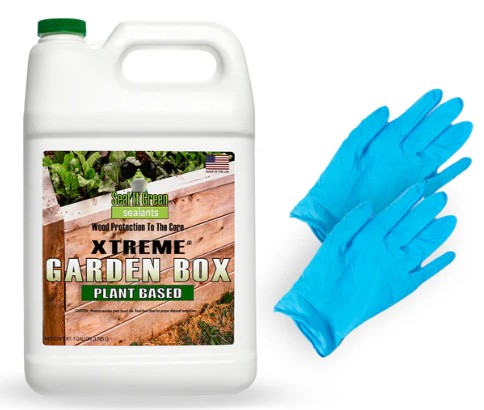Gardeners know that raised beds are more than just boxes of soil—they’re the foundation of a thriving backyard garden. But even the best soil and seeds won’t make up for one commonly overlooked issue: wood degradation. Whether you’re growing herbs, veggies, or vibrant flowers, protecting the structure of your garden box is crucial. That’s where a quality gardenbox sealer comes in. But not just any sealer will do—especially when your garden’s health and safety are on the line.
Why You Need to Seal Your Garden Box
Wooden garden beds are constantly exposed to water, sunlight, and soil, all of which can cause significant damage over time. When unsealed wood absorbs moisture, it becomes prone to cracking, warping, rotting, and mold growth. This not only weakens the structure but also risks contaminating your soil.
Sealing the wood adds a protective layer that acts like Armor against these threats. More importantly, when you’re growing food, using the wrong type of sealer can lead to harmful chemicals leaching into your garden. That’s why choosing a sealer designed for outdoor and edible environments is key.
What Makes a Good Garden Box Sealer?
Not all wood sealers are created equal, especially when it comes to safety and environmental impact. When shopping for a garden box sealer, here are some features to look for:
- Water Resistance: Protects the wood from rain, watering, and soil moisture.
- UV Protection: Helps prevent sun-related fading and structural weakening.
- Toxin-Free Ingredients: Essential for keeping food-growing areas safe.
- Eco-Friendly Formula: Ideal for sustainable gardening practices.
- Durability: A good sealer should last through multiple seasons before needing reapplication.
These characteristics not only help protect your raised beds but also support the health of your plants and the quality of your harvest.
How to Apply Your Sealer for Best Results
Applying a sealer isn’t difficult, but doing it properly ensures maximum protection. Here’s a simple step-by-step guide:
- Clean the Surface: Remove any dirt, dust, or old finish from the wood using a damp cloth or mild soap solution.
- Dry Completely: Make sure the wood is dry before applying the sealer to ensure proper absorption.
- Apply Evenly: Use a paintbrush, roller, or sprayer to cover all surfaces of the wood, including the underside and edges.
- Allow to Cure: Let the sealer dry fully, following the product’s instructions. Some may require multiple coats.
- Reapply as Needed: Typically, resealing every one to two years maintains peak protection.
Applying the sealer before filling the box with soil gives the best long-term results.
Use a Food Safe Sealer for Edible Gardens
If your garden box is used to grow vegetables, herbs, or fruit, you should only use a food safe sealer. These sealers are free from harsh chemicals and are specifically designed to be non-toxic. Many food-safe options are water-based, contain low or no VOCs (volatile organic compounds), and are safe for use around pets, children, and sensitive plants.
For example, USDA Biobased Certified products or those made from natural oils like linseed or tung oil are excellent choices. Not only do they protect the wood, but they also align with the organic principles many home gardeners value.
Common Mistakes to Avoid When Sealing Your Garden Box
Even with the right product, mistakes during application can reduce your sealer’s effectiveness. Watch out for these common errors:
- Skipping Cleaning: Dirt or mold on the surface can block proper absorption.
- Sealing Wet Wood: Moisture inside the wood can prevent the sealer from bonding properly.
- Overapplication: Using too much product can lead to uneven coverage or peeling.
- Using Unsafe Sealers: Avoid traditional wood sealants used for decks or fences, as many contain chemicals not safe for gardens.
Taking your time and following the right process makes all the difference in extending the life of your garden box and keeping it safe.
Conclusion: Choose an Organic Wood Finish for a Garden That Lasts
The right wood sealer is an essential investment in your garden’s longevity and safety. It preserves the strength of your garden box, protects your soil, and ensures your plants grow in a safe, non-toxic environment. If you're serious about sustainability and health, opting for an organic wood finish is the best choice.





Comments